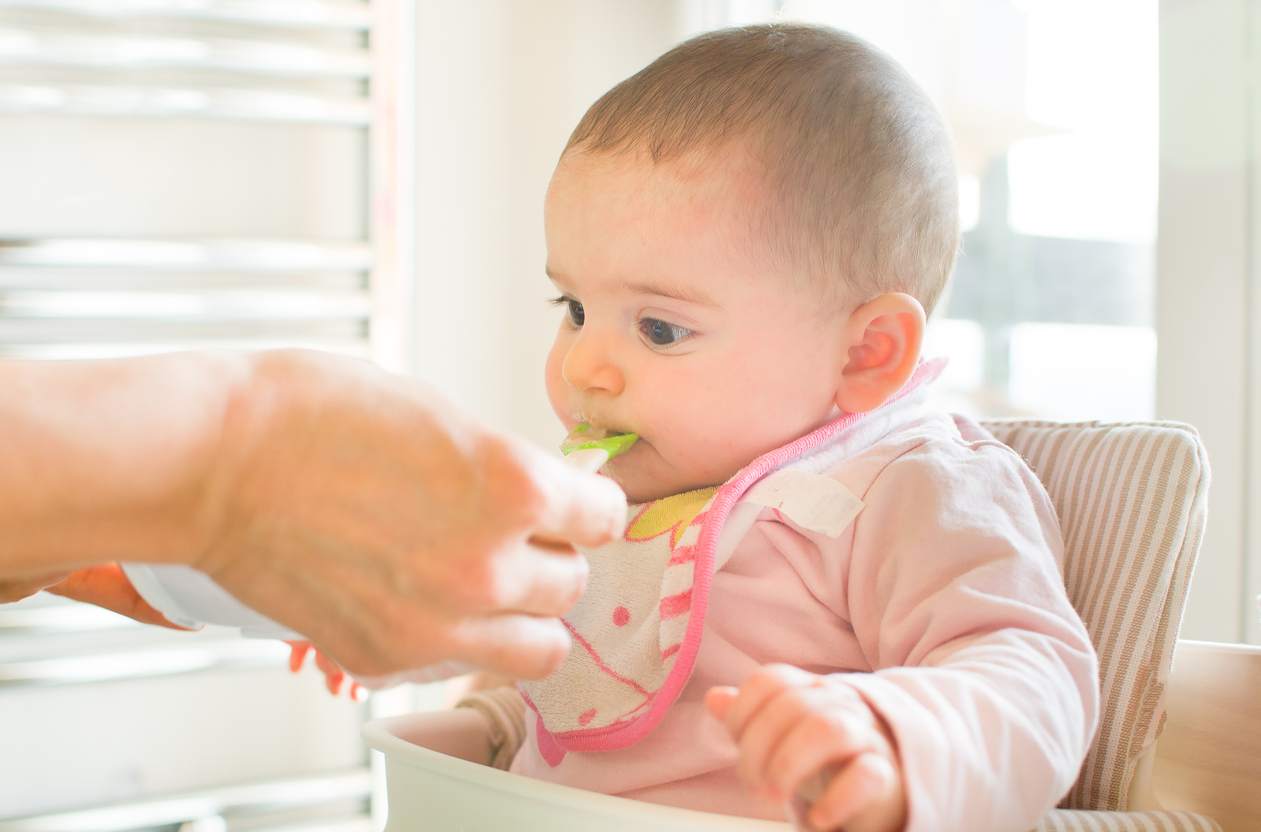Is It Okay to Dry Nurse? What to Know About "Dry" Breastfeeding

You’re an official aficionado when it comes to breastfeeding. But dry nursing is a new term to you. What exactly does it mean to dry nurse–and how is it different from the type of breastfeeding you’ve come to know and love?
The American Academy of Pediatrics (AAP) supports breastfeeding exclusively for the first six months and for one year or more after the baby starts to eat solids. Even though your own milk offers benefits galore, sometimes a mother just can’t nurse or her let-down isn’t what she thought. Whether your milk supply is too low to feed your little one, you chose to supplement with formula, or your older baby/toddler just prefers the taste of “big kid” foods, traditional nursing isn’t always an option. But dry nursing is! If dry nursing while pregnant, dry nursing a toddler, or dry feedings, in general, are totally new terms to you, check out what the soon-to-be new mom (or new mom again) needs to know about techniques, positions, potential physical issues, older babies/toddlers, and weaning solutions.
Related: Breast Milk Storage: How Long Is Breast Milk Good For?
What Is Dry Nursing?
It’s all in the name! This type of nursing is exactly what the name implies–a dry, or milk-less, type of breastfeeding. Technically, you do not actually breast“feed” your baby or toddler when you dry nurse. But you will use the same, or a similar, technique.
This nursing alternative is also known as non-nutritive nursing or comfort nursing. Like pacifier use, dry breastfeeding does not provide your baby with the nutrients they would otherwise get from breastmilk. Instead, it serves other purposes. Keep in mind that your baby may get a random drip or drop of leftover breastmilk. But this shouldn't serve as a main meal. You will still need to supplement with formula or, depending on your child’s age, start them on solids.
Why Dry Nurse?

Your breast milk supply is dry and you don’t have enough milk to adequately feed your baby. So, why continue nursing if your baby gets a barely-there flow every time they latch on? There are several reasons to consider dry nursing. These include comfort and practice for the infant. It may also help some women to improve their milk supply or lead to a longer period of breastfeeding in premature infants, according to Rady Children’s Hospital.
Along with the benefits for your baby and milk flow, non-nutritive nursing can also help you to relax and bond with your little one. Even though breastfeeding serves a biological purpose, it also has an emotional or psychological tie. According to research from the American Psychological Association (APA), the longer a woman breastfeeds, the higher the level of maternal sensitivity. This level could extend past the toddler time for a breastfed baby! The skin-to-skin contact, ability to look directly into your baby’s eyes and the added together-time may help you to keep a sense of calm and connect with your kiddo–and in a way that a paci just won’t.
You may also want to use this option as a way to wean your older baby or toddler. Even though your milk has dried, the comforting sucking motion is something your child craves. Instead of a cold turkey approach, non-nutritive nursing allows you to gently wean them off of the breast.
What Are the Pros and Cons?
Are you on the fence? You’re not sure whether this nursing option is for you–but still want to explore what it has to offer. Before you decide one way or the other, think about the pros and cons of non-nutritive nursing.
Pros of Dry Breastfeeding
- More time together. Not only will you get more time together, but you’ll also get some major QT with your cutie!
- All the cuddles. Some day your toddler will grow into a broody, moody teen. While they’ll still have tons of love for mom, you’ll miss the cuddles your two-year-old eagerly showered you with. Comfort nursing provides extra snuggle time for the two of you.
- Relaxation. This pro goes for both of you. Your kiddo will get the same stress relief they find from sucking on a paci. And again, you’ll get the calming benefits of nursing too.
- Practice. Your baby’s needs aren’t always easily met by the boob in the postpartum period. Maybe the areola is hard to find or there’s another issue. Practice makes perfect! Babies, especially premature infants, may have trouble sucking and swallowing in coordination. Non-nutritive nursing provides the practice they need to feed.
Cons of Dry Breastfeeding
- It’s not a meal. Fed is best for your baby. Whether this happens by the breast or the bottle, your little one needs nutrients. Dry breastfeeding doesn’t provide the healthy meal your kiddo needs to grow–and is something to consider when your milk production is low or you want to stop breastfeeding entirely. This means you will need to use bottle-feeding or solids (if they’re old enough) to provide a nutritious diet.
- Discomfort. Are your nipples dry and chapped? Continued or prolonged dry sessions may only add to skin breakdown and flaking. A cold compress may help to ease some discomfort. Continued pain may indicate a breast infection. Talk to your healthcare provider if you have constant irritation or discomfort that doesn’t easily resolve.
And that’s about it. Some mamas may have concerns about spoiling their littles or feeling like they’re a human paci. Don’t panic. While technically you will take on the role of a living, breathing pacifier, it’s perfectly okay. You’re helping to keep their calm and self-soothe in a natural way.
How Should You Dry Nurse?

The techniques and positions you use are the same as what you would try during a traditional, milk-led breastfeeding session. If you’ve already nursed your baby, you have a head start. Keep going with the technique that already works for you–and your child. This strategy is ideal for mamas dry nursing a toddler.
If you’re new to nursing, you may need to experiment with different holds. A lactation consultant can help you to learn more about the best positions. The cradle hold is a traditional pick. You’ll, as the name implies, cradle your baby on your lap–holding on to their body with the arm nearest to the breast they’ll use. Babies who need extra support could benefit from a cross-cradle hold. In this hold, you’ll cradle baby with the opposite arm and use the closest hand to support your own breast. Other holds include the football hold and the koala hold (where the baby is upright on your breast).
Can You Dry Nurse an Older Baby While Pregnant?
You’re on round two–or three or four. Can you dry-nurse your older baby or toddler while you’re pregnant? Like traditional breastfeeding, you can go ahead and continue this type of nursing into pregnancy–provided your doctor or medical provider okay’s it.
The bigger your belly bump grows, the more changes you will need to make in your nursing position. A side-lying position or football hold may work better with a baby bump. You will also need to pay attention to nipple changes and breast sensitivity. If you’re one of the not-so-lucky mamas who have achy pregnancy breasts, you may need to take a break from non-nutritive nursing.
What About Weaning?

Again, non-nutritive nursing is a way to help wean your breastfed baby. But it’s only one possible way. Drying up breast milk means you can’t nurse. If dry “breastfeeding” isn’t for you, your baby is teething and doesn’t want to nurse, or is painful you have other options. The AAP suggests gradually tapering off the number of times you nurse. Of course, you’ll need to replace these missed sessions with a bottle or food-led feedings (for older infants). You may also notice that your baby prefers not to nurse. Natural weaning may happen as your older infant starts to eat more and more solids.
Want to learn more about your breastfeeding journey, nursing, and lactation? Check out our Breastfeeding 101 info for tips on everything from breast pads to milk flow!!

